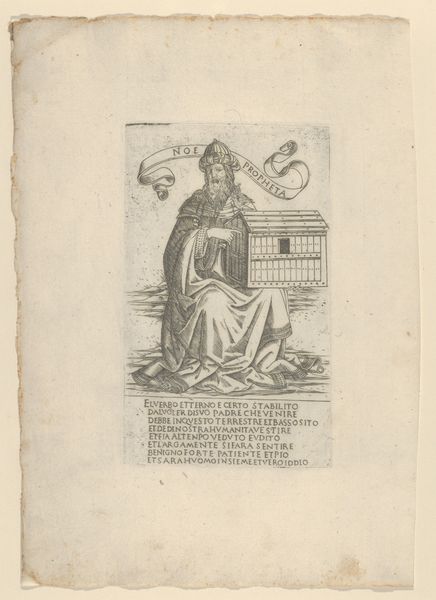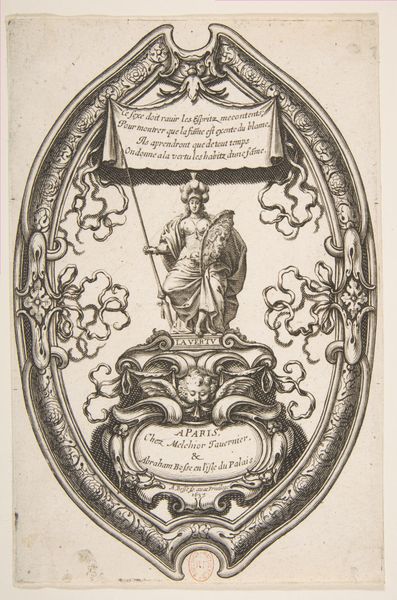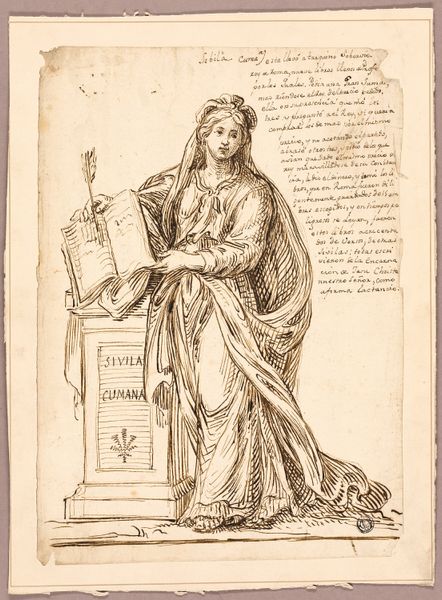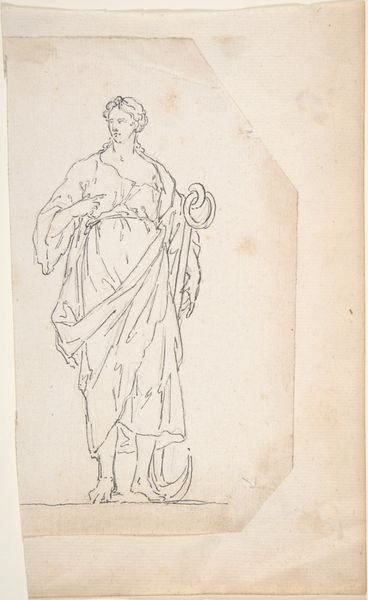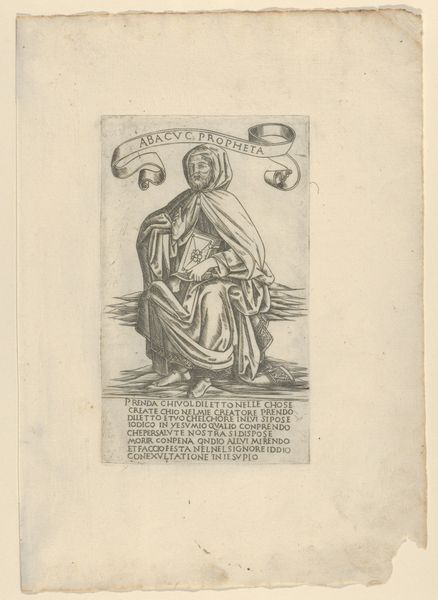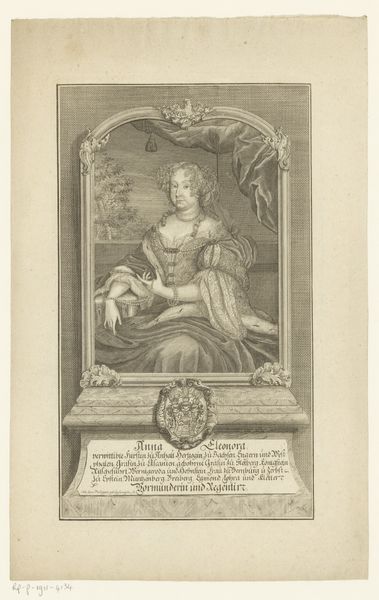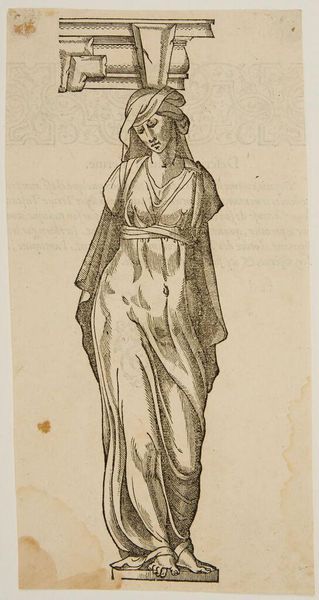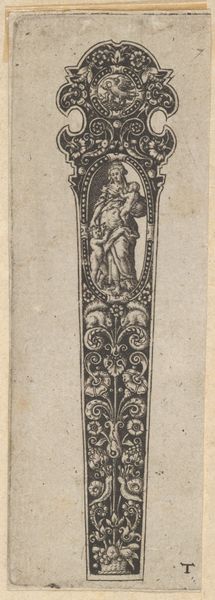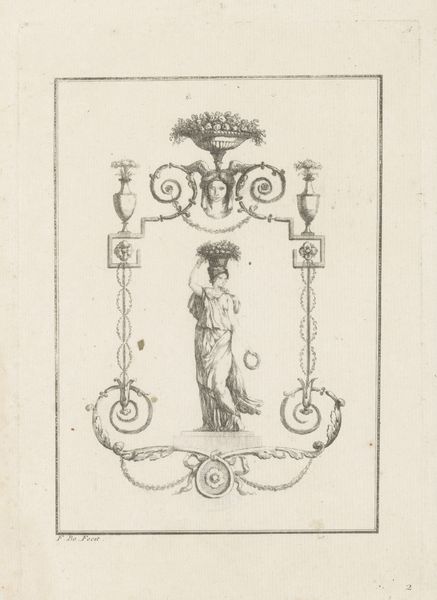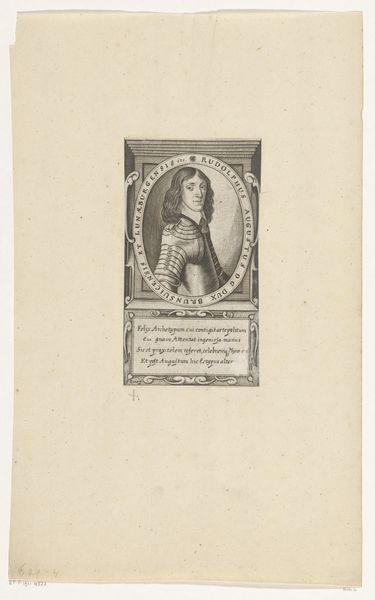
drawing, pencil
#
portrait
#
drawing
#
pencil
#
history-painting
#
academic-art
Copyright: Rijks Museum: Open Domain
This undated photograph from the Rijksmuseum captures an album page dedicated to Janus Dousa. The image's concepts of liberty and a golden age must be understood within its late 16th-century cultural context. The central figure, likely a personification of liberty, anchors the visual and textual elements. “Aurea Saeculi,” or “Golden Age,” suggests a longing for a classical past, while "Hvbertas" signifies liberty. The Latin text below dedicates the album page to Janus Dousa, praising his intellect and erudition. The inscription reveals the print was produced in Bruges, Flanders by Hubertus Goltzius. Flanders was then embroiled in the Eighty Years' War, struggling for independence from Spanish rule. This political turmoil infuses the image with deeper meaning. The concept of "libertas," therefore, takes on potent political connotations, reflecting the aspirations of a people yearning for freedom. Understanding such an image demands that we look into archives and libraries to study the intellectual and political debates of the time. The meaning of art, after all, is deeply rooted in its specific social and institutional context.
Comments
No comments
Be the first to comment and join the conversation on the ultimate creative platform.
